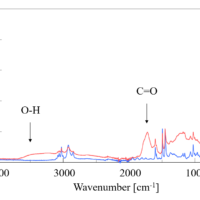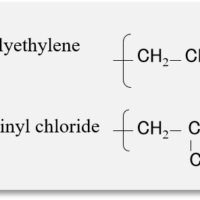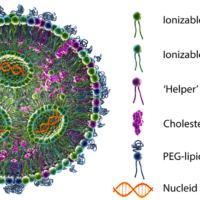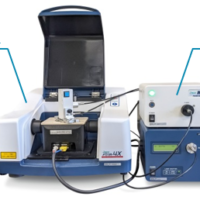Introduction
Biodegradable plastics have been developed as materials that can reduce the burden on the global environment. For the commercially available garbage bags made of biodegradable plastics, we reported the results of evaluating the biodegradation process in soil by FTIR at previous article. In this report, in addition to field tests in the soil reported earlier, changes in biodegradable plastics due to outdoor exposure and heating were evaluated by FTIR.
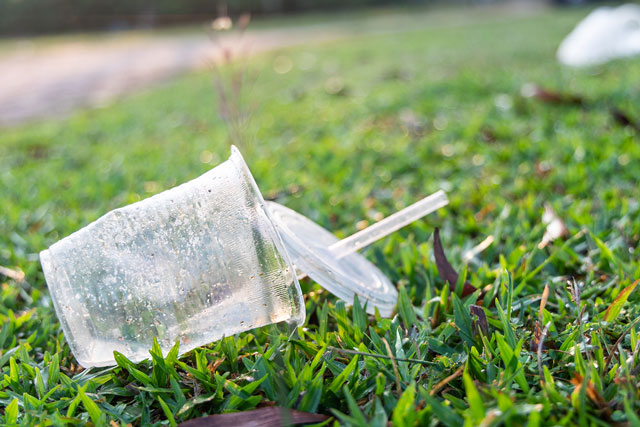
Indiscriminate dumping of PVC cups litter on public park pose danger to environment.
Experimental
Sample
– Garbage bag made of biodegradable plastic (BS-PL copolymer: polybutylene succinate – polylactic acid copolymer)
– Polyethylene (PE) garbage bag

Structures of polybutylene succinate (left) and polylactic acid (right)
Field test condition
Soil burial condition:
Films cut out to 3 cm x 6 cm was buried in a place about 5 cm deep in the soil at the burial place.
Outdoor exposure condition:
Films cut out to 3 cm x 6 cm was placed at a height of about 100 cm from the ground surface under sunlight outdoors.
Heating condition:
Films cut out to 3 cm x 6 cm was placed in an incubator* set at 70 ºC (*Incubator “breeze” and SS type controller, Isuzu Seisakusho)
Measurement condition
Instruments: FT/IR-4600
Resolution: 4 cm-1
Detector: DLATGS
Accumulation: 64 times
Measurement Method: ATR
Accessory: ATR PRO ONE (Diamond prism)

FTIR spectrometer with ATR Accessory (FT/IR-4600 + ATR PRO ONE)
Keywords
Biodegradable plastics, FTIR, ATR
Results
Figures 1-3 show the sequential IR spectra of soil burial test, outdoor exposure test and heating test results for each functional group. In PE, no remarkable change in spectrum was observed in any of the field tests.

Figure 1. Sequential change of ATR-IR spectrum of -CH stretching vibration (offset)

Figure 2. Sequential change of ATR-IR spectrum of -CO stretching vibration (offset)

Figure 3. Sequential change of ATR-IR spectrum of -C(=O)O- stretching vibration (offset)
From the results of the IR spectrum by decomposition in the soil and photodegradation by UV and decomposition by heating, it was clearly observed that the difference in the decomposition behavior, such as the change in the alkyl terminal group of the polymer chain and the appearance of a new carbonyl group due to the decrease in molecular weight1), were caused by the difference in the progress of cleavage of the ester group and the progress of dehydration.
Conclusion
Under the natural environment there are various deteriorating factors for plastics, each of which is thought to be acting in a complex way, it is difficult to grasp the mechanism of deterioration in detail. However, by evaluating the biodegradability of biodegradable plastics using FTIR, it was possible to evaluate the degradation behavior due to the difference in degradation factors.
References
1. Michael Niaounakis, Biopolymers Reuse, Recycling, and Disposal, Elsevier Science, 2013.

